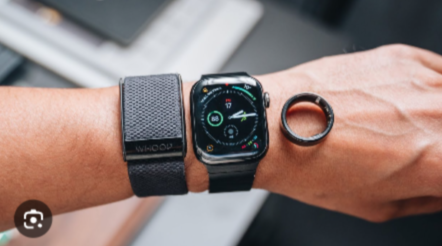The Potential Risks of Wearable Technology: Could Devices Like WHOOP Be Weaponized?
As wearable fitness devices, such as the WHOOP tracker, become increasingly popular, concerns over data privacy and security are growing. While these devices offer detailed health metrics that can significantly enhance personal well-being and athletic performance, their ability to collect sensitive information has raised questions about potential misuse. This fear is not unfounded, particularly in a world where technology has been exploited for harmful purposes, such as how pagers were weaponized in the Middle East for communication in conflict zones. Could wearable tech, like WHOOP, be subject to similar risks? Let’s explore some key concerns.
1. Data Privacy Concerns
WHOOP devices, along with other health trackers, collect a vast array of sensitive personal data, including heart rate, sleep patterns, and movement. While this data can be beneficial for health monitoring, it also presents privacy risks. If malicious actors were to gain access to this information, they could potentially use it to track individuals, monitor their routines, or gather detailed personal insights without consent. In conflict zones or oppressive regions, this type of data collection could become particularly dangerous, allowing for surveillance of dissidents or vulnerable groups.
2. Government or Corporate Surveillance
Another major concern is the potential for governments or corporations to demand access to the data collected by wearable devices. In regions where privacy protections are weak, authorities might exploit health data for purposes beyond the user’s control. This could include tracking citizens, monitoring their daily activities, or even identifying individuals based on physiological data. Just as pagers were repurposed for communication in certain parts of the world, wearable tech could be co-opted for widespread surveillance, especially in authoritarian regimes.
3. Cybersecurity Threats
Wearable devices like WHOOP are connected to apps and cloud-based servers, which can make them vulnerable to cyberattacks. If hackers gain access to the device’s infrastructure, they could potentially steal sensitive health data or even track a user’s physical location in real time. The more connected a device is, the greater the potential for a breach in security. While WHOOP and other companies implement encryption and other safety measures, no system is completely immune to attacks. A successful breach could result in the misuse of personal data on a large scale.
4. Misuse by Employers or Insurance Companies
In certain situations, the data collected by WHOOP and other wearable devices could be misused by employers, insurance companies, or other organizations. For example, employers could demand access to their employees’ health metrics to monitor productivity, sleep habits, or stress levels. Similarly, insurance companies could use this data to adjust premiums or deny coverage based on an individual’s health patterns. In extreme cases, this type of surveillance could lead to discrimination, invasion of privacy, or unethical monitoring practices.
5. The Challenge of Balancing Benefits with Risks
While wearable technology like WHOOP offers undeniable benefits—allowing users to monitor their health and optimize recovery—these devices also raise important ethical questions. Can companies be trusted to protect sensitive data? Will government bodies respect individual privacy? As more personal information is collected, the potential for misuse grows, especially in regions or industries where privacy protections are lax.
Conclusion: Staying Vigilant in a Connected World
The rise of wearable tech represents a powerful tool for enhancing health and performance, but with that power comes responsibility. Users must remain aware of how their data is being collected, stored, and shared. Reviewing privacy policies, utilizing strong account security (such as two-factor authentication), and being selective about who has access to personal data are essential steps to protect against the potential misuse of wearable devices.
While companies like WHOOP invest in encryption and security measures, no technology is foolproof. As technology continues to evolve, individuals, companies, and governments alike must work to strike the right balance between innovation and the protection of privacy.



